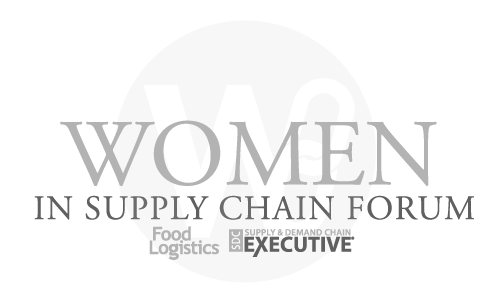Navigating the Q2 2025 Truckload Market: A Current Snapshot
The U.S. truckload market continues to evolve, presenting a dynamic landscape for shippers and carriers alike. As we move deeper into Q2 2025, a consistent trend of gradual demand growth, tightening carrier capacity, and stable yet inflationary rates is emerging. Understanding these underlying shifts is crucial for optimizing logistics operations and ensuring supply chain resilience. Businesses are keenly focused on implementing strategies for dealing with demand fluctuations and maintaining consistent service in a volatile environment. The importance of agile planning and diversified capacity cannot be overstated as the market navigates these ongoing forces. For many, this necessitates a move toward more adaptive approaches, such as leveraging hybrid freight solutions for market volatility, which can offer flexibility and stability.
Macroeconomic Influences on Freight Dynamics
The broader economic climate plays a significant role in shaping the truckload market. While the U.S. economy experienced a slight decline in Q1 2025, forecasts still point to overall growth for the year. Key economic indicators such as industrial production, consumer spending, imports, and inventory levels are directly linked to truckload activity. Consumer spending, though its growth rate has moderated, remains a stabilizing force, buoying the overall economy. However, shifts in consumer preference from goods to services, observed post-pandemic, continue to influence freight volumes, leading to a more subdued recovery in the trucking sector. Furthermore, the fluid nature of trade policy and tariffs introduces an element of uncertainty, potentially influencing import levels and industrial output. Businesses employing robust supply chain strategies are better positioned to respond to these macroeconomic shifts.
Six Key Trucking Trends Impacting Capacity and Rates
Several critical trends are currently defining the truckload market:
-
Potential Freight Demand Snapback: While demand has been somewhat sluggish, a de-escalation in trade tensions or pre-Q4 inventory building could trigger a surge in truckload volumes later in the year, leading to increased port congestion and market volatility.
-
Shifting Spot/Contract Rate Dynamics: Contract rates are beginning to show inflationary signs after a prolonged period of reductions. As spot rates continue their upward trajectory, they may eventually surpass contract rates, putting pressure on existing routing guides and potentially leading to carrier churn.
-
Summer Shipping Event Volatility: Seasonal events like International Roadcheck, produce season, and Memorial Day typically disrupt capacity. How the market absorbs these events in Q2 will be a strong indicator of broader trends for the remainder of 2025.
-
Declining Class 8 Truck Orders: After a period of unexpected strength, Class 8 tractor orders are now reflecting the financial strain on carriers from softer freight markets. This indicates a reduced need for incremental capacity and a reluctance to invest in new equipment due to high operating costs and uncertain market conditions.
-
Waning Carrier Employment: Despite initial resilience, carrier attrition is now consistently visible in employment figures. While owner-operators might be shifting to larger fleets or reinstating authorities seasonally, the overall trend suggests a shrinking driver pool, making capacity more fragile.
-
Language Requirement Enforcement: A renewed focus on enforcing English proficiency standards for commercial truck drivers could lead to a noticeable reduction in the available driver pool, further exacerbating capacity constraints.
Leveraging Hybrid Freight Solutions for Market Volatility
In this evolving landscape, shippers need adaptable strategies. This is where adaptable multimodal solutions and a hybrid asset and brokerage model truly shine. An asset-based carrier, like APEX Transit, provides the core stability of a dedicated fleet with rigorously maintained equipment and vetted drivers. This ensures reliability and consistent capacity, offering a crucial buffer against unexpected market shifts. Simultaneously, a robust brokerage network expands capacity options, providing access to additional carriers and specialized services when demand spikes or unique needs arise. This combination allows for a flexible, responsive approach to logistics:
- Mitigated Risk: The blend of owned assets and brokered capacity helps cushion against sharp rate increases or capacity shortages that often accompany market volatility.
- Optimized Cost & Service: Shippers can leverage dedicated assets for predictable lanes while utilizing the brokerage arm for spot market needs or surges, balancing cost efficiency with service reliability.
- Enhanced Visibility: With advanced telematics and open-API GPS links, a hybrid provider can offer real-time tracking and data integration into your ERP systems, providing unparalleled insight into your freight’s movement.
- Tailored Solutions: Whether it’s cross-border logistics expertise for USMCA trade, specialized cold-chain transport for pharmaceuticals, or LTL consolidation, a hybrid model can customize solutions to specific industry requirements.
This Move – Manage – Optimize philosophy transforms logistics from a transactional service into a strategic partnership, helping businesses navigate complex freight challenges effectively.
Q2 2025 Truckload Market Outlook and Strategic Procurement Tips
The forecast for Q2 2025 indicates a continued inflationary trend in spot rates. While a dramatic spike is unlikely this quarter, the underlying capacity situation is notably more delicate than in previous years. Preliminary Q2 figures show some downward trends in imports and production, influencing the Curve’s behavior. However, a stabilization in trade policy could see these figures, and subsequently, freight rates, rise by quarter-end.
For shippers, strategic procurement is key. It is advisable to avoid overly aggressive rate cutting. Short-term gains from significant reductions in contract rates might lead to higher costs in the spot market later in 2025, as cash-strapped carriers seek more profitable loads. Maintaining strong relationships with core freight providers is also paramount. Even with lower current volumes, keeping these partners engaged ensures capacity and reliability when market conditions inevitably tighten. Proactive planning and open communication with your logistics partners will be vital in navigating the shifting dynamics of the truckload market.
Building a Resilient Supply Chain for Future Fluctuations
The lessons from Q1 2025 and the outlook for Q2 underscore the ongoing need for supply chain resilience. Developing a strategy that embraces hybrid freight solutions for market volatility is no longer a competitive advantage but a fundamental requirement for sustained success. By integrating asset-based reliability with flexible brokerage capabilities, companies can build robust supply chains that absorb shocks and adapt swiftly to change. This involves investing in advanced technology for real-time visibility, leveraging data for informed decision-making, and fostering true partnerships with logistics providers who understand your unique needs and long-term goals. The ability to move, manage, and optimize freight across diverse modes, with transparent communication and a commitment to operational excellence, will empower businesses to thrive amidst future market fluctuations.
Have questions? Contact us here.














